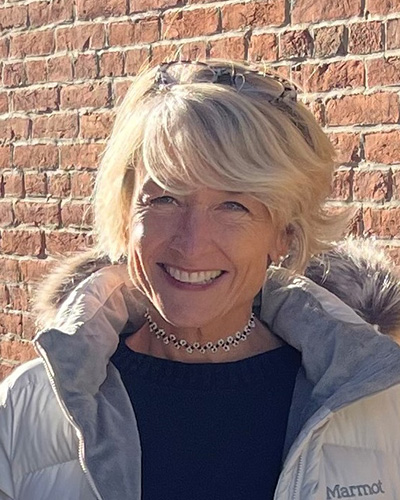
Juliet Wiersema
Professor, Art and Art History
Pre-Hispanic and Spanish Colonial Art History
Contact
Bio
Juliet Wiersema specializes in the visual and material culture of the Pre-Hispanic and late Spanish Colonial Andes (Peru and Colombia). She holds a Ph.D. in Art History and Archaeology from the University of Maryland and an M.A. from the Institute of Fine Arts, New York University. Juliet’s forthcoming book, The History of a Periphery. Spanish Colonial Cartography from Colombia’s Pacific Lowlands, 1720-1820 (University of Texas Press), uses manuscript maps from eighteenth-century New Granada (today’s Colombia) to unearth narratives about African autonomy, placemaking, indigenous resistance, and tenuous colonialisms in gold mining areas on the fringes of Spain’s empire. Her new book project, “Ports of Plunder and Islands of Entanglement: William Hacke’s “Pirate Maps” of the Spanish South Sea” critically examines extant copies of Hacke’s hand-painted South Sea Waggoners, focusing attention on the geographic areas between the two “gateways” of entry into the Pacific, the Isthmus of Panama and the Straights of Magellan. Her study aims to recover the overlooked but pivotal role that unfrequented bays, lesser ports, and remote islands held for Spanish navigators and their foreign adversaries. It also works to uncover what these sailor geographies tell us about Pacific interactions, entanglements, commerce, contraband, imperial rivalries, and the relative value of commodities in the later Spanish colonial period. Juliet’s earlier research examined ancient American cultures without written histories, using art and architecture to address questions of scale, the constructed environment, represented space, and the relationship between portable architectural representations and monumental architectural remains. Her first book, Architectural Vessels of the Moche. Ceramic Diagrams of Sacred Space in Ancient Peru (University of Texas Press 2015), posits that the Moche, one of the most powerful groups living in South America before the formation of the Inca Empire, created architectural vessels (some acoustic artifacts) that functioned as three-dimensional maps of ceremonial space. Juliet's research has been supported by the National Endowment of the Humanities (2020-2021), the John Carter Brown Library (2021), The Metropolitan Museum of Art (2011-2012), the Smithsonian Institution’s National Museum of the American Indian (2007), and The Library of Congress (2006). She was a US Student Fulbright Fellow to Peru in 2007-2008.Teaching
- AHC 4423 Art of Mesoamerica (online)
- AHC 4333 Looting, Forgery, Collectors and the Art Market
- AHC 4333 Art of the Ancient Andes
- AHC 4333 Arts of Colonial Latin America, 1521 AD-present
- AHC 4333 In the Footsteps of the Early Maya Explorers: Study Abroad to the Yucatan
- AHC 5813 Mexican Manuscripts: Codices of the Aztec and Mixtec
- AHC 5813 Andean Pictorial Manuscripts from the 17th and 18th centuries
- AHC 5813 Directed Research
Research Interests
- cartography,
- art and visual culture of pre-Hispanic and colonial Latin America
- architecture
- cultural heritage
- ceramic technology
- acoustic artifacts
Degrees
- Ph.D. in Art History and Archaeology, University of Maryland (2010)
- M.A. in History of Art and Archaeology, Institute of Fine Arts, New York University (2002)
Honors and Awards
Humanities
Grants, Patents and Clinical Trials
2021-2022 John Carter Brown Library Residential Fellowship
2020-2021 National Endowment for the Humanities Fellowship
2011-2012 Sylvan C. Coleman and Pamela Coleman Memorial Fund Fellowship,
The Metropolitan Museum of Art
2007-2008 US Student Fulbright IIE Fellowship to Peru
2007 Smithsonian Institution Predoctoral Fellowship, National Museum of the American
Indian
Publications
BOOKS
2024 The History of a Periphery. Spanish Colonial Cartography from Colombia’s Pacific Lowlands, University of Texas Press (anticipated December 2023)
2015 Architectural Vessels of the Moche. Ceramic Diagrams of Sacred Space in Ancient Peru, University of Texas Press
ARTICLES & BOOK CHAPTERS
2023 “Mine Owners, Moneylenders, Enslavers, and Litigants. Free Black Mining Dynasties
in the Colombian Chocó, 1744-1784,” in At the Heart of the Borderlands: Africans and
Afro-descendants on the edges of Colonial Spanish America, Cameron D. Jones and
Jay T. Harrison, eds., Diágalos Series, University of New Mexico Press, p. 108-132.
2020 “The Map of the Yurumanguí Indians. Charting the Erasure of Indigenous Inhabitants
in the Pacific Lowlands, Eighteenth-century Nueva Granada,” Terrae Incognitae 52 (2): 160-194.
2020 “Importing Ethnicity, Creating Culture. Currents of Opportunity and Ethnogenesis
along the Río Dagua in Nueva Granada, c. 1764,” in The Global Spanish Empire. Five
Hundred Years of Placemaking and Pluralism, Christine Beaule and John Douglass, eds., Amerind Studies in Archaeology, University of Arizona Press, p. 267-290.
2018 “The Manuscript Map of the Dagua River. A Rare Look at a Remote Region in the
Spanish Colonial Americas,” Artl@s Bulletin 7 (2): 71-90.
2017 “Ceramics. A Tradition of Permanence,” in Unsettled. Redefining the Greater West, JoAnne Northrup, ed., Nevada Museum of Art, p. 187-190.
2016 “Processions, Architecture, and the Space in Between. Some Observations about
Sculpted Moche Pottery,” Ñawpa Pacha. Journal of Andean Archaeology 36 (1): 1-18.
2015 “The Art of Ancient Andean Architectural Representations,” in Design for Eternity.
Architectural Models from the Ancient Americas, Joanne Pillsbury, ed., The
Metropolitan Museum of Art, p. 55-79.
2012 “Vasijas arquitectónicas Moche. Pequeñas estructuras, grandes consecuencias,” in
Microcosmos, Adine Gavazzi, ed., Apus Graph Ediciones, p. 96-111.
2012 “La relación simbólica entre las representaciones arquitectónicas en las vasijas
Mochica y su función ritual,” in Modelando el mundo. Imágenes de la arquitectura
precolombina, Cecilia Pardo, ed., PUCP Fondo Editorial and Museo de Arte Lima,
- 165-191.
WORKS IN PROGRESS
“Curso de el río Atrato. Plan de la Provincia del Zitará: promoting settlement in New
Granada’s remote Chocó?” under review, Colonial Latin American Review
“Ports of Plunder and Islands of Entanglement: Spanish Nautical Charts and English ‘Pirate Maps’ of the South Sea,” book manuscript

